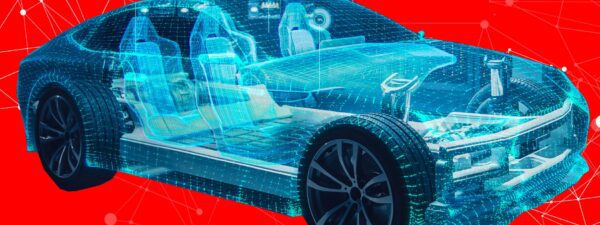Vehicles are increasingly becoming connected, thanks to the various services, sensors and devices embedded within them. Indeed, the Internet of Things has significantly impacted the automotive industry, steering it from one with mostly traditional vehicles to one that is filled with smart vehicles.
The Role of the IoT in the Automotive Industry
The automotive industry is one of the fastest-growing and most promising markets for IoT solutions. This comes as no surprise, really, when you consider that the automobile industry is a powerhouse manufacturing industry, producing more than 70 million cars each year.
Integrating the Internet of Things into the automotive industry can improve vehicle performance, augment quality control, and reduce costs. Additionally, IoT has helped the automotive industry to enhance vehicle communications, automate transportation systems, connect cars, and promote faster response times and data transfer. Ultimately, IoT technologies are effectively making vehicles more intelligent, more efficient, and safer.
Various automotive sectors have already adopted IoT to maximize productivity and save time in a fast-paced world. In fact, research shows that the market for IoT solutions in the automotive industry is likely to increase to $740 billion by 2050.
The Use Case of IoT in the Automotive Industry
IoT has numerous applications in the automotive industry, both at the industrial and commercial levels; check out the three major IoT applications below.
- Fleet Management
The value of IoT in the fleet management field – which, put simply, allows fleet operators to keep track of processes relating to their trucks – is undeniable.
A fleet owner’s main objective is to comply with strict safety and environmental regulations to lower the total cost of ownership (TCO). IoT comes in handy by ensuring optimal use of the fleet to increase output, ensure driver safety, and lower overall operating costs.
Specifically, IoT solutions can collect sensory data, which is stored in a cloud application, from a large fleet of vehicles. This data is then processed via analytic methods before it is delivered in a visual format. Fleet operators can use this information to monitor driver behavior, fleet performance, vehicle speeding and idling, and more. What’s more, fleet operators can check the real-time location of their fleets and send idle alerts, which ultimately save money, time and staff resources.
With the help of IoT, one can easily control the fleet, automate processes, and plan trips. To sum it up, the notable benefits of IoT for fleet operations include:
- Optimization of maintenance and logistics;
- Monitoring of driver performance; and
- Monitoring of stats such as mileage and fuel utilization, and route management.
- Predictive Maintenance Technology
IoT technology has quickly been adopted by the automotive industry because it offers both preventive and predictive maintenance alerts. This means collecting sensor data from different car components in real-time.
Predictive maintenance technology, which is based on IoT connectivity tools, can collect vehicle data by combining cloud computing and edge computing with sensory data collation. This technology relies on machine learning algorithms that can monitor different metrics such as battery and engine status, temperature, speed, and more.
The data is transmitted to the cloud, where a machine-learning algorithm uses it to predict the future outcomes of the car components based on their performance. The algorithm evaluates the risks of potential car malfunction and can notify the driver of any necessary repairs or services.
For instance, the system can predict whether or not the battery will run low. If the chance of running low is high, then the system will prepare the necessary inputs to notify the driver. The notification system will automatically send the driver a message about the issue at hand through a connected device.
IoT predictive maintenance technology allows car owners to take the necessary steps to prevent breakdowns and potential accidents. It can measure performance variables and calculate a vehicle’s remaining useful life. In the end, this can help circumvent expensive repairs, which will save money in the long run.
- Connected Cars Through CV2X Cellular Vehicle to Everything
Another major application of IoT in the automotive sector is in connecting cars. Cellular Vehicle to Everything (CV2X) is a network that connects cars, established by the 3rd Generation Partnership Project (3GPP). CV2X promotes backward compatibility while also supporting the future of connected vehicles.
Connecting cars began in 1996 when General Motors implemented an OnStar project that offered connected communication subscription services for vehicles. This project enabled in-vehicle communication and GPS tracking. Fast forward to the Internet of Things era, where cars connected to smartphones can do much more than just GPS tracking.
Cellular Vehicle to Everything has two modes of operation: device-to-device and device-to-network.
Device-to-Device
CV2X’s device-to-device mode of operation allows various communications such as vehicle-to-infrastructure (V2I), vehicle-to-vehicle (V2V), and vehicle-to-pedestrian (V2P). These communications pave the way for connected roadways via capabilities such as:
- Sharing speed data;
- Avoiding collisions;
- Safety alerting to cyclists and pedestrians; and
- Traffic signal timing or priority
V2V allows cars at close range to share data such as speed, locations, and dynamics. Consequently, this technology can help prevent collisions and accidents as well as send alerts during an emergency.
Meanwhile, V2I connection can help control traffic flow and prevent congestion at bus stops in everything from parking lots, traffic lights and lane markings to gas stations and toll booths.
Finally, V2P connection allows pedestrians to locate nearby taxis.
Device-to-Network
The device-to-network mode of operation enables communication for vehicle-to-network (V2N) through cellular networks. This connection allows real-time traffic reporting and routing that can warn drivers of traffic jams, accidents, or bad weather conditions on their routes. V2N also allows for data streaming capabilities and end-to-end solutions.
IoT continues to speed into the automotive industry
With most automotive sectors embracing IoT technologies, vehicle safety, comfort and management capabilities have improved dramatically. As these IoT technologies continue to evolve within the automotive industry, it is expected that all new vehicles will boast IoT connectivity by 2025.



